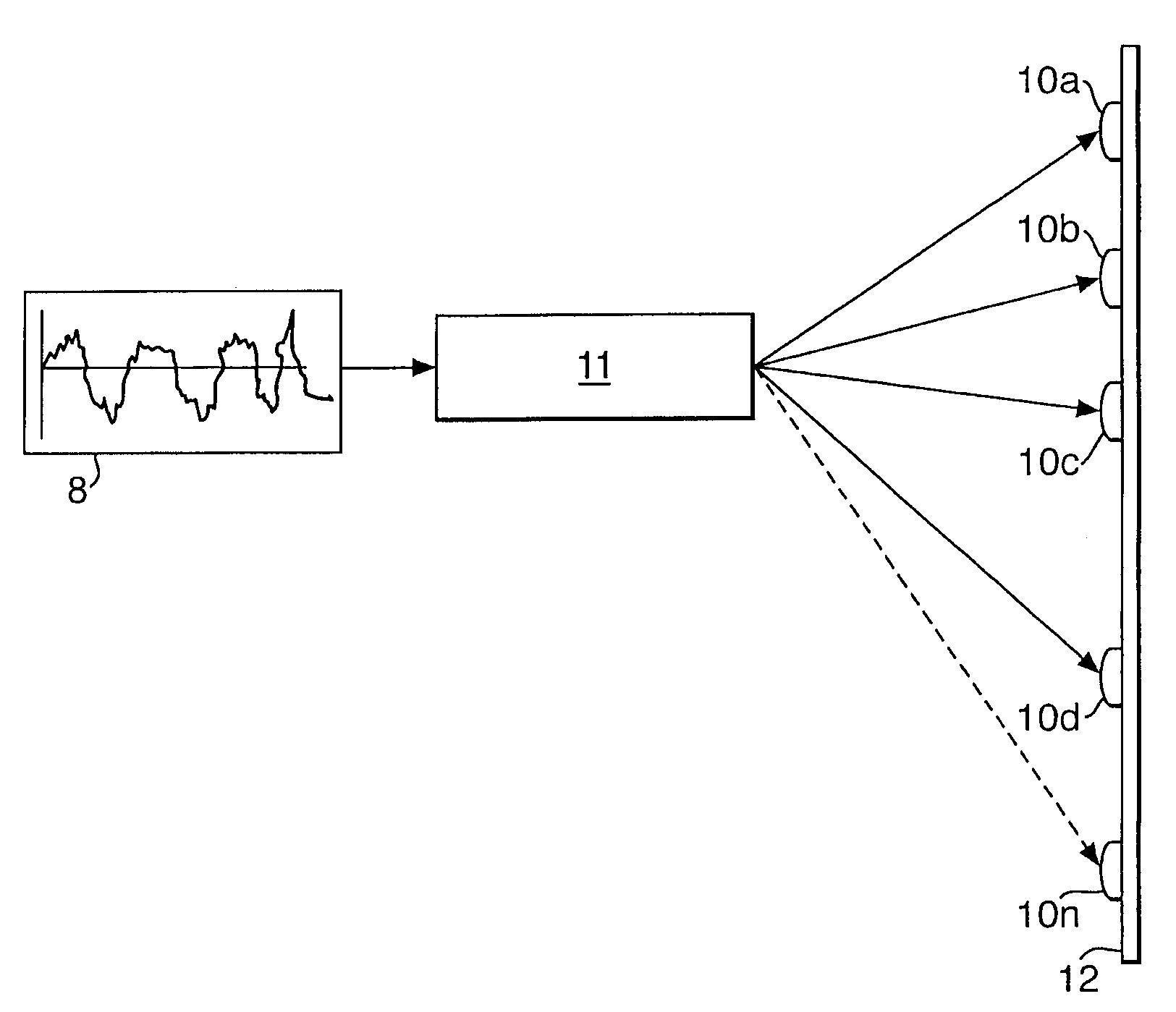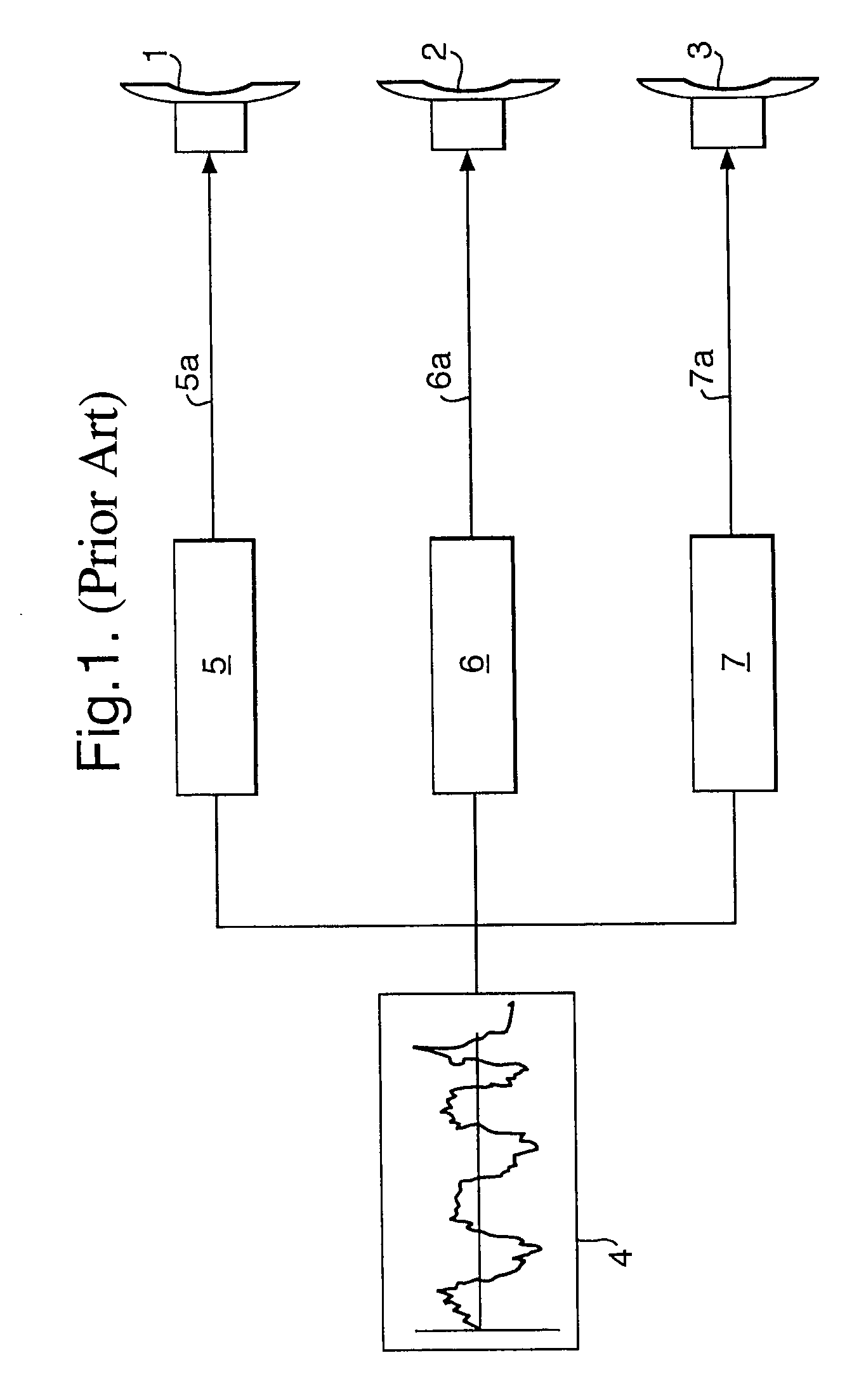Loudspeaker
a loudspeaker and amplifier technology, applied in the field of loudspeakers, can solve the problems of poor performance, obvious complexity, and the inability of digital loudspeakers to take full advantage of 24-bit fidelity, and achieve the effect of avoiding rapid changes in gain to each loudspeaker and high absolute sound levels
- Summary
- Abstract
- Description
- Claims
- Application Information
AI Technical Summary
Benefits of technology
Problems solved by technology
Method used
Image
Examples
Embodiment Construction
[0018]At low frequencies the acoustic pressures produced by the action of each active driver will tend to add in a linear fashion. In order to ensure that the combined output from all drivers is correct a control signal can conveniently be applied to the linear time signal to maintain the sum of the linear time output equal to the required signal output.
[0019]In contrast, at high frequencies the acoustic pressures produced by the action of each active driver will add in a power manner. Therefore in order to ensure that the combined power output is correct a control signal can conveniently be applied to a suitable squared time signal such that the sum of the acoustic power output is equal to the desired power output. This is beneficial at the higher frequencies where drivers tend to act independently of one another.
[0020]Preferably, the controller operates in both linear and power signals, such that at low frequencies the controller maintains the linear sum, whilst at high frequencie...
PUM
 Login to View More
Login to View More Abstract
Description
Claims
Application Information
 Login to View More
Login to View More - R&D
- Intellectual Property
- Life Sciences
- Materials
- Tech Scout
- Unparalleled Data Quality
- Higher Quality Content
- 60% Fewer Hallucinations
Browse by: Latest US Patents, China's latest patents, Technical Efficacy Thesaurus, Application Domain, Technology Topic, Popular Technical Reports.
© 2025 PatSnap. All rights reserved.Legal|Privacy policy|Modern Slavery Act Transparency Statement|Sitemap|About US| Contact US: help@patsnap.com



